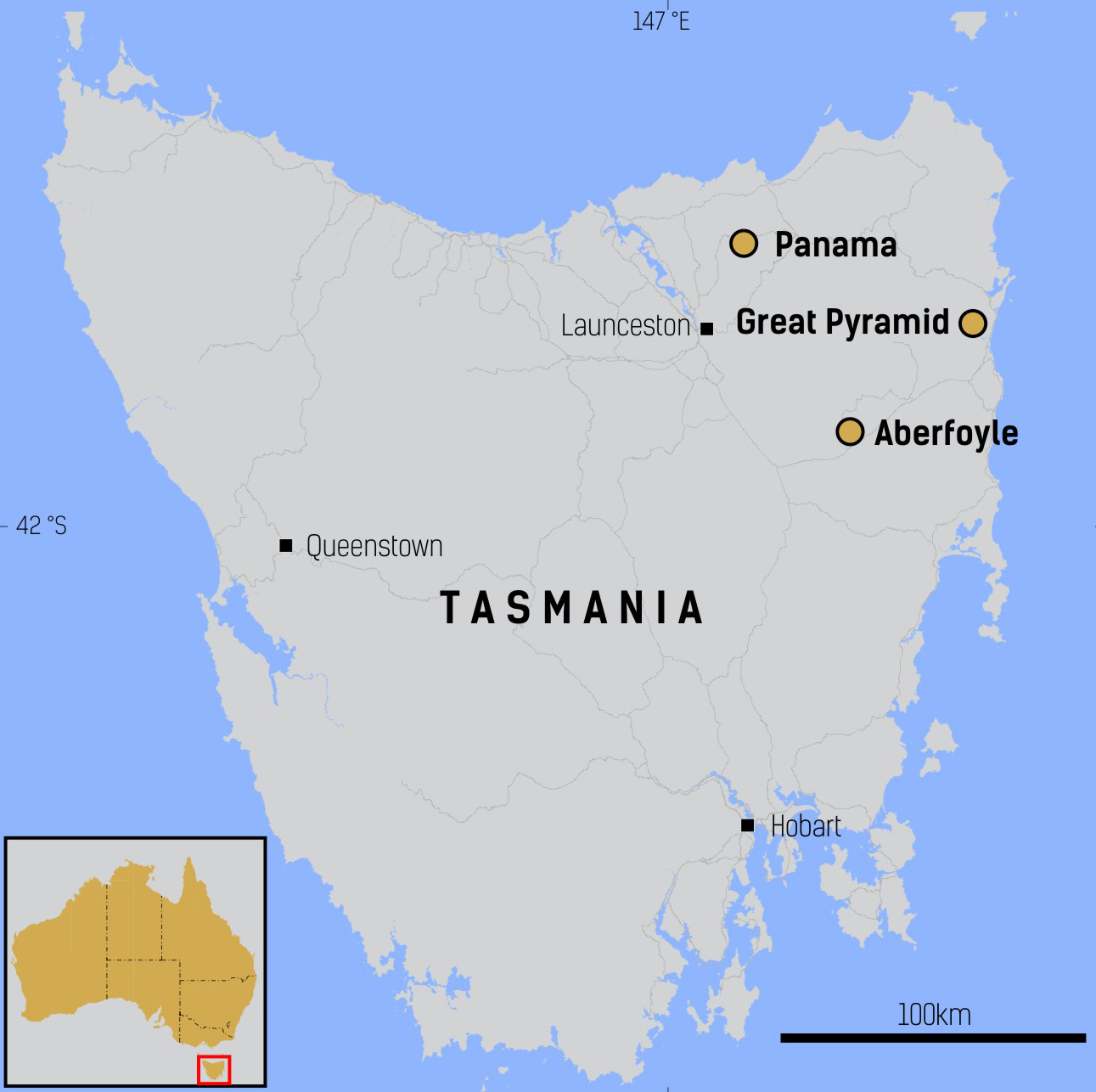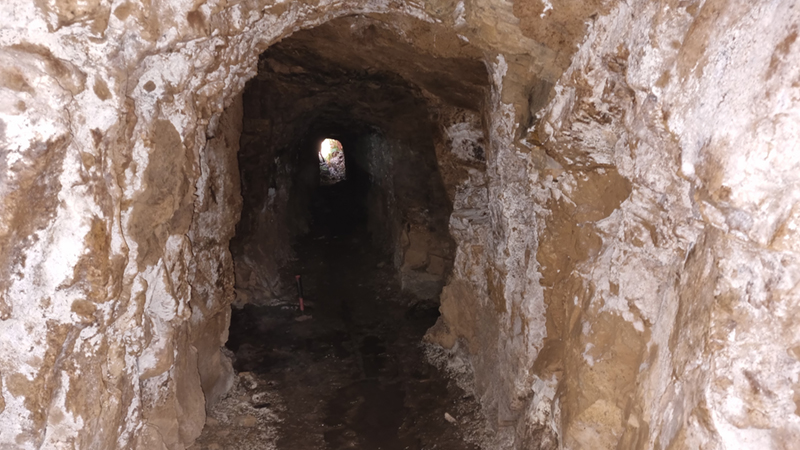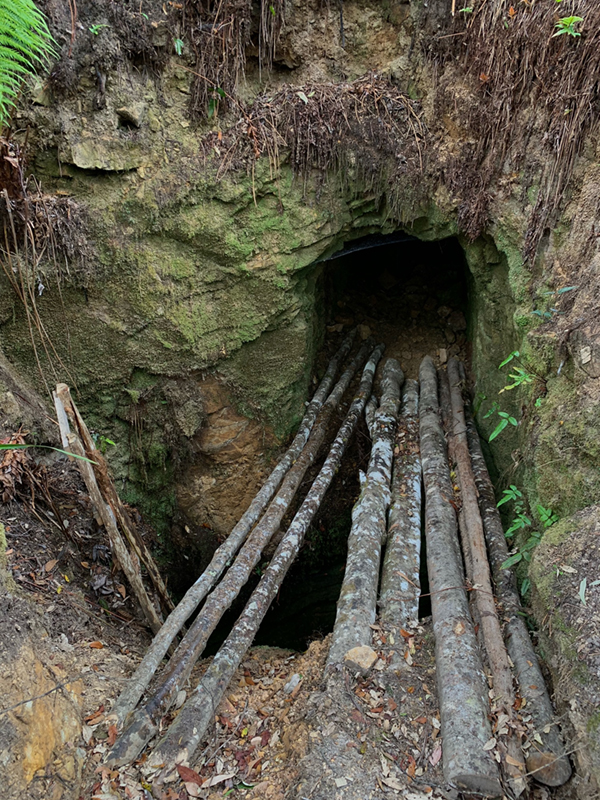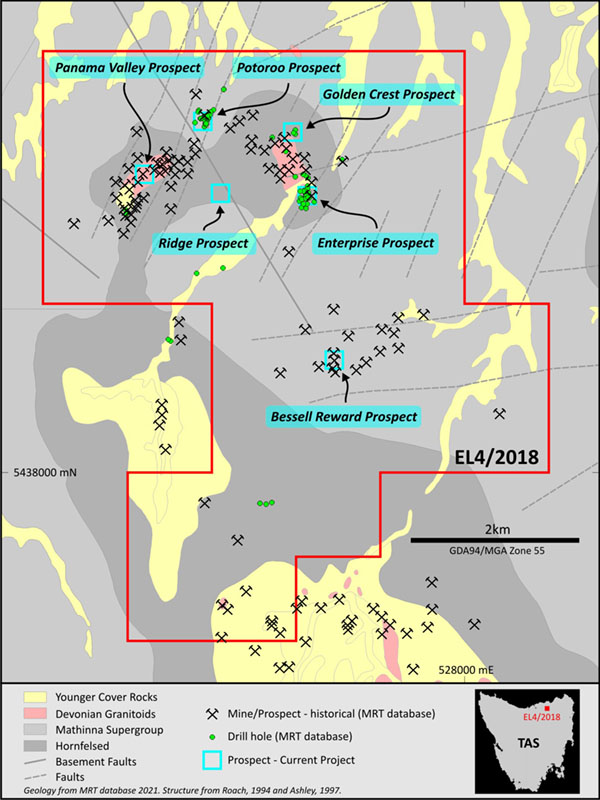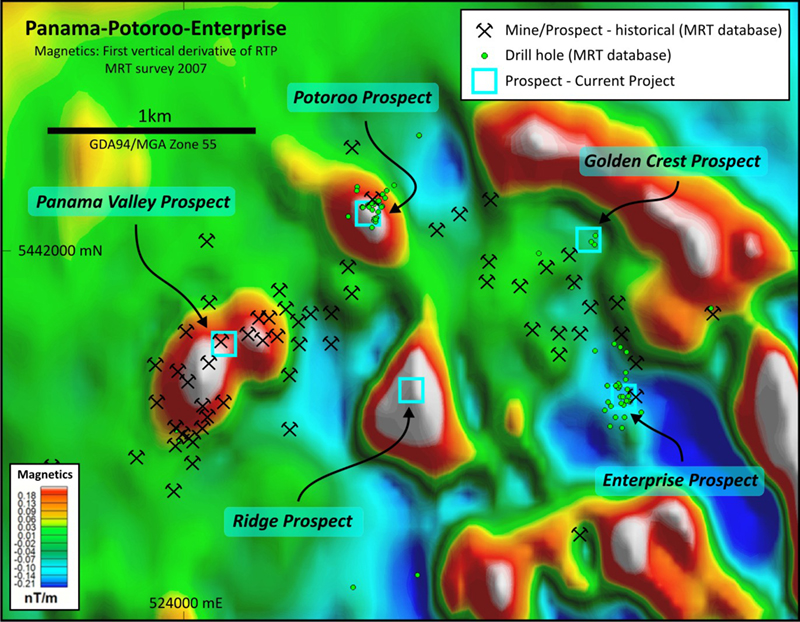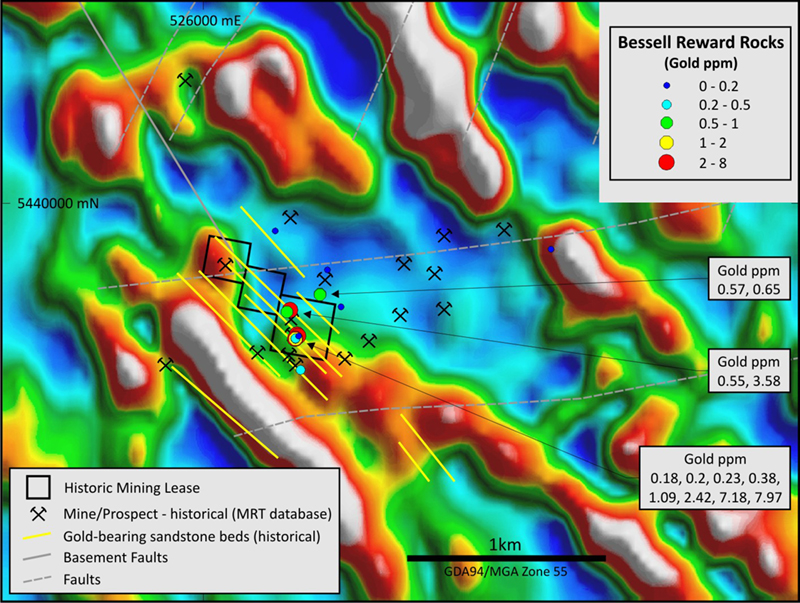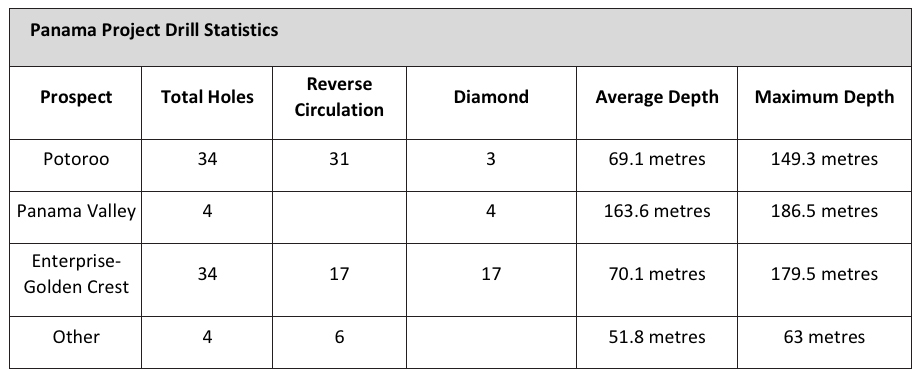PANAMA
GOLD PROJECT
Ownership
Ron Gregory, Ken Morrison, and Russell Fulton (“Panama Partners”) – 100% TinOne Resources Inc. has Option Agreement to acquire 100% of the tenement. As of 7 June 2022, TinOne Resources Inc. has a 75% beneficial ownership percentage of the tenement.
Tenure
28 square kilometres
Licence granted 5 February 2019 for five years.
Target
Geology
The Lisle Granodiorite is deeply weathered and rarely outcrops. These intrusives are complex and heterogeneous with numerous inclusions of hornfelsed Mathinna Supergroup and dark diorite. Textures vary from equigranular, feldspar-biotite-quartz granodiorites to feldspar-hornblende-biotite porphyritic diorites. Intrusions occur as dykes and small cupolas or porphyritic apophyses.
Both the intrusions and the sediments are considered to be prospective for intrusion related gold systems (IRGS), sediment hosted disseminated gold and mesothermal gold deposits.
Granodiorite-hosted gold mineralisation
The primary target in this prospect is a granodiorite intrusion at the south-western end of Panama Valley Numerous historic alluvial workings are recorded above the weathered intrusion and prospector diggings occur in the Mathinna Supergroup rocks in the contact aureole, but the granodiorite intrusion has never been drilled or subjected to any modern exploration.
The prospectivity of this target is based on its similarities, in terms of magnetic signature and structural/geomorphic setting, to a smaller granodiorite intrusion, known as the Potoroo prospect, further down slope in the north-east of Panama Valley. Modern exploration at Potoroo by previous companies demonstrated a small but coherent body of low grade, near surface gold mineralisation disseminated through the sericite-clay-sulphide altered granodiorite host rock in a structurally focussed zone corresponding to a magnetic high. The magnetic anomaly source rocks are enriched in accessory pyrrhotite rather than magnetite and the mineralisation at Potoroo correlates with the modelled source of the anomaly. The gold occurs partly as free electrum and partly as fine grained inclusions in arsenopyrite and high arsenic pyrite.
Sediment-hosted gold mineralisation
Data supporting the sandstone-hosted, near surface gold model proposed for Bessell Reward is derived from compiling and interpreting a combination of; Tasmanian Geological Survey mapping and aeromagnetics, a track and ridgetop soil survey from previous company exploration, reported sampling results from sandstone beds exposed by prospectors in the 1920s and rock chip samples taken by the current authors.
It is interpreted as a cross-cutting structural zone through a NW-SE striking sequence of folded Mathinna Supergroup meta turbidites. The mineralisation appears to occur in both sandstone-hosted bedding-parallel veinlets and fine fractures as well as disseminated within the sandstone interbeds in a dominantly siltstone sequence (Lone Star Siltstone). The zone of structural deformation containing the target sandstones corresponds to a topographic anomaly comprising a ridge striking normal to the background geology, and a discontinuity on aeromagnetic linear trends related to fold axis in the background geology. It is clear from the historic alluvial diggings either side of the ridge, and the ridge topsoil and rock chip results, that the sandstone ridge is a source of gold. The mineralisation also coincides with the margin of a magnetic low, suggesting the possibility of demagnetising alteration.
Historic Exploration
The most productive period was from 1878 to 1909 and the area officially produced 2.7 tonnes of gold by 1925, mostly from the Lisle Valley alluvials. The Chief Government Geologist estimated the production to 1909 to be 250,000 ounces. Minor alluvial mining continues to the present day.
Hard rock mining in the Golconda and Panama goldfields continued periodically until the 1920’s. Production records are poor, but head grades are generally reported to be in the 8¬15 g/t range with production mainly from small quartz veins hosted in granitoids and Mathinna Group sediments.
Modern exploration commenced in the 1970s and comprised of broad-scale stream sediment, soil, and rock chip sampling. An aeromagnetic survey was flown in 1983. Five open-hole percussion drill holes were completed on the Panama tenement area in 1984. CRA Exploration noted the presence of gold in sandstone at Bessell Reward prospect with a sample of “… bleached white sandstone, slightly pitted and micaceous, surrounded by secondary ferruginised/silicified brownish material which follows joints. Some thin quartz stringers to 1mm.” that returned an assay of 7.18 ppm gold.
A significant period of exploration took place in the 1990s to early 2000s with intensive soil sampling, rock chip sampling, trenching and both reverse circulation and diamond drilling. The Potoroo prospects was discovered during this phase of exploration. A total of 73 holes were drilled during this period.
In all, a total of 78 holes have been drilled within the tenement with an average depth of 73 metres. The maximum hole depth is 186.5 m and only 3 holes deeper than 150 metres have been drilled.
TinOne Resources Inc. Exploration
The soil survey confirms coherent anomalies indicated by earlier work. The IP survey defines strong chargeability anomalies east that partially overlap geochemical anomalies. There is a significant difference in chargeability between the eastern and western parts of the survey area, delineated by a fault interpreted from the magnetics.
Exploration Plans
TinOne Resources Inc. plans to execute systematic exploration utilising modern techniques. This is likely to include:
- Additional IP/resistivity
- Additional soil geochemistry
- Reverse Circulation and diamond drilling beneath old workings
- Reverse circulation and/or diamond drilling of soil geochemical anomalies
- Reverse circulation and/or diamond drilling of IP/resistivity targets
Qualified Person
For additional information regarding TinOne’s Panama Project please refer to the Technical Report entitled “Panama Project” dated effective March 29, 2021, prepared by Tim Callaghan, available under TinOne’s profile on www.sedar.com.

